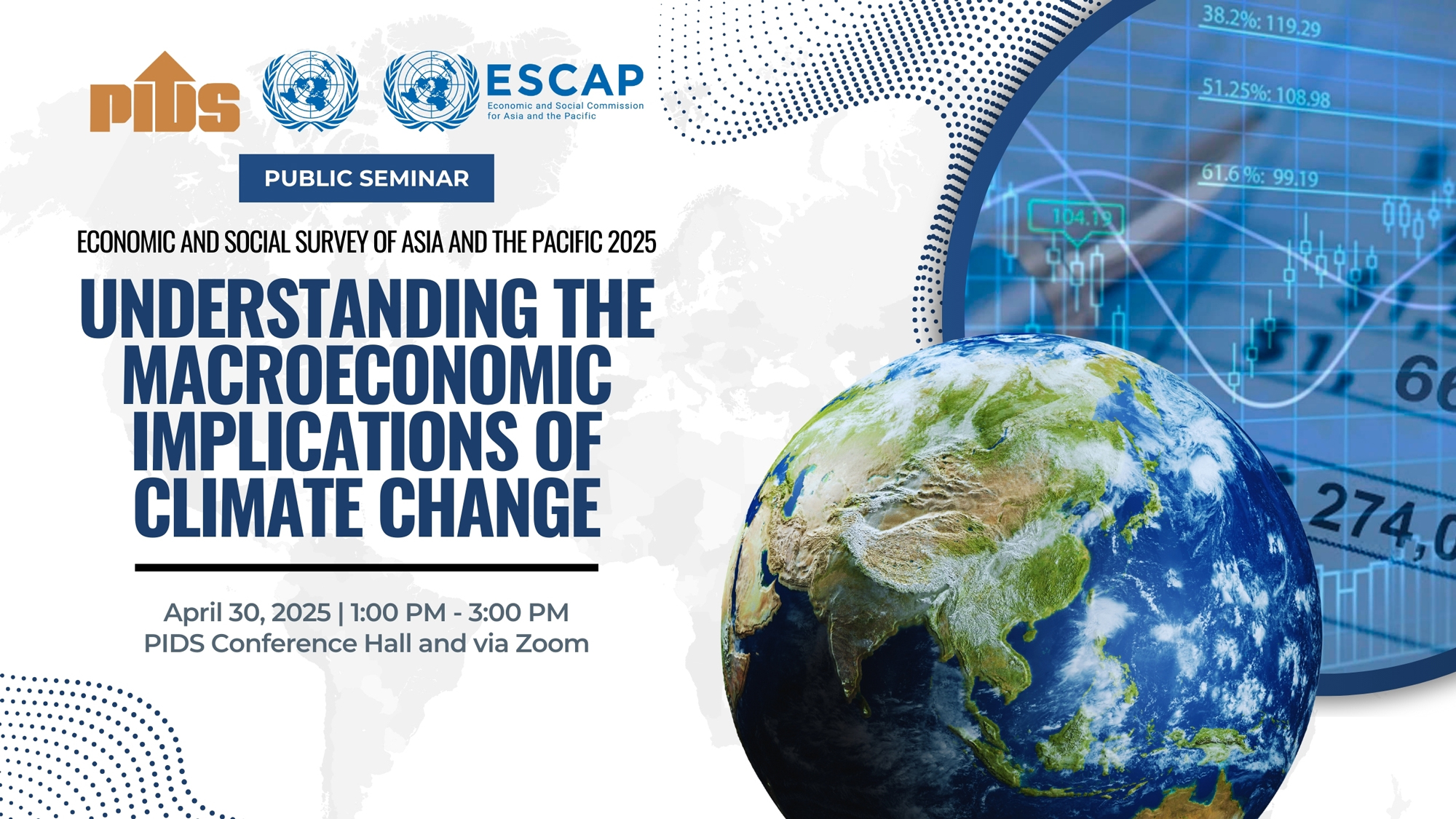The Philippine Institute for Development Studies (PIDS) urged the government not to revive publicly owned bus lines, such as the “Love Bus”, to solve the problematic bus system in Metro Manila.
In a paper, PIDS President Gilberto M. Llanto and consultant Hope A. Gerochi also thumbed down the consolidation of private-bus operations to ease traffic on Epifanio de los Santos Avenue..
Instead, Llanto and Gerochi recommended the adoption of Bogota’s TransMilenio, which champions the competition for the market policy that is projected to help improve bus operations along Edsa. .
Consolidation under the current competition in the market framework where buses directly compete on the road offers limited gains because of the structure and organization of the bus market and the inability to address certain market failures,” the authors said..
Given these limitations, shifting the competition framework from direct competition to ‘competition for the market’ via competitive tendering offers a viable alternative,” they added.
The competition for market is a mechanism used to select the optimum number of formal bus transport operators that will serve the market. Under the system, the government controls certain aspects of bus services, such as design of the bus network, quality standards and frequency, among others.
The report from the state-run think tank noted that this will help “address the market failures that are inherent in liberalized urban bus markets.”.
The PIDS researchers also said the government has the perfect means to adopt a competition for market scheme in its planned Bus-Rapid-Transit (BRT) lines, including the one planned on Edsa..
To be effective and to encourage the application of this new framework also to non-BRT corridors, complementary reforms have to be implemented in parallel and these would include improving the capacity of regulatory agencies, institutions [rules of the game], procurement, contract monitoring and traffic management,” the authors said. >.
However, if this new scheme will be adopted by the government, the authors said there is a need to amend the Public Service Act.
Llanto and Gerochi said the antiquated law does not reflect the new development in transportation systems and regulatory frameworks.
The authors said they support the proposed amendments of the law that removes certain industries from the list of public utilities.
If passed into law, the amendments to the Public Service Act will remove certain industries performing a public service from the list of public utilities, which in effect, will address the constitutional restriction on foreign equity participation in public utilities,” Llanto and Gerochi said.
As far back as the 1970s, the government tried to solve the poor bus operation system in Metro Manila. In 1974, by virtue of Presidential Decree 492, the government created the Metro Manila Transit Corp. (MMTC) to operate a publicly owned bus line later known as the “Love Bus”.
However, in the first four years of its operation, the company accumulated a deficit of over P140 million. At that time was equivalent to acquiring 4,800 jeepneys with seating capacity of about 75,000 or double the seats provided by MMTC’s fleet.
The company also suffered from absenteeism and a sharp decline in the number of buses in operation between 1983 and 1987. The MMTC eventually stopped operations in the 1990s.
The study stated that, while the Japan International Cooperation Agency estimated that Metro Manila traffic costs P2.4 billion a day, the congestion costs on Edsa is also staggering.
The authors, citing another PIDS study published in 2015, said the annual social cost of congestion on Edsa is P5.5 billion. This includes foregone wages of passengers who come to work late and high bus operating costs in plying the congested thoroughfare.
Despite this, around 12,595 buses operate within Metro Manila and from neighboring provinces to Metro Manila. Of the total number of franchised bus units in Metro Manila, some 3,711 operate the Manila-Edsa route, while 1, 632 franchised bus units ply the non-Edsa routes.
However, the 2015 PIDS study noted that bus occupancy rate within Edsa was as low as 52 percent. This means the buses plying Edsa run half-empty most of the time.
In a paper, PIDS President Gilberto M. Llanto and consultant Hope A. Gerochi also thumbed down the consolidation of private-bus operations to ease traffic on Epifanio de los Santos Avenue..
Instead, Llanto and Gerochi recommended the adoption of Bogota’s TransMilenio, which champions the competition for the market policy that is projected to help improve bus operations along Edsa. .
Consolidation under the current competition in the market framework where buses directly compete on the road offers limited gains because of the structure and organization of the bus market and the inability to address certain market failures,” the authors said..
Given these limitations, shifting the competition framework from direct competition to ‘competition for the market’ via competitive tendering offers a viable alternative,” they added.
The competition for market is a mechanism used to select the optimum number of formal bus transport operators that will serve the market. Under the system, the government controls certain aspects of bus services, such as design of the bus network, quality standards and frequency, among others.
The report from the state-run think tank noted that this will help “address the market failures that are inherent in liberalized urban bus markets.”.
The PIDS researchers also said the government has the perfect means to adopt a competition for market scheme in its planned Bus-Rapid-Transit (BRT) lines, including the one planned on Edsa..
To be effective and to encourage the application of this new framework also to non-BRT corridors, complementary reforms have to be implemented in parallel and these would include improving the capacity of regulatory agencies, institutions [rules of the game], procurement, contract monitoring and traffic management,” the authors said. >.
However, if this new scheme will be adopted by the government, the authors said there is a need to amend the Public Service Act.
Llanto and Gerochi said the antiquated law does not reflect the new development in transportation systems and regulatory frameworks.
The authors said they support the proposed amendments of the law that removes certain industries from the list of public utilities.
If passed into law, the amendments to the Public Service Act will remove certain industries performing a public service from the list of public utilities, which in effect, will address the constitutional restriction on foreign equity participation in public utilities,” Llanto and Gerochi said.
As far back as the 1970s, the government tried to solve the poor bus operation system in Metro Manila. In 1974, by virtue of Presidential Decree 492, the government created the Metro Manila Transit Corp. (MMTC) to operate a publicly owned bus line later known as the “Love Bus”.
However, in the first four years of its operation, the company accumulated a deficit of over P140 million. At that time was equivalent to acquiring 4,800 jeepneys with seating capacity of about 75,000 or double the seats provided by MMTC’s fleet.
The company also suffered from absenteeism and a sharp decline in the number of buses in operation between 1983 and 1987. The MMTC eventually stopped operations in the 1990s.
The study stated that, while the Japan International Cooperation Agency estimated that Metro Manila traffic costs P2.4 billion a day, the congestion costs on Edsa is also staggering.
The authors, citing another PIDS study published in 2015, said the annual social cost of congestion on Edsa is P5.5 billion. This includes foregone wages of passengers who come to work late and high bus operating costs in plying the congested thoroughfare.
Despite this, around 12,595 buses operate within Metro Manila and from neighboring provinces to Metro Manila. Of the total number of franchised bus units in Metro Manila, some 3,711 operate the Manila-Edsa route, while 1, 632 franchised bus units ply the non-Edsa routes.
However, the 2015 PIDS study noted that bus occupancy rate within Edsa was as low as 52 percent. This means the buses plying Edsa run half-empty most of the time.












